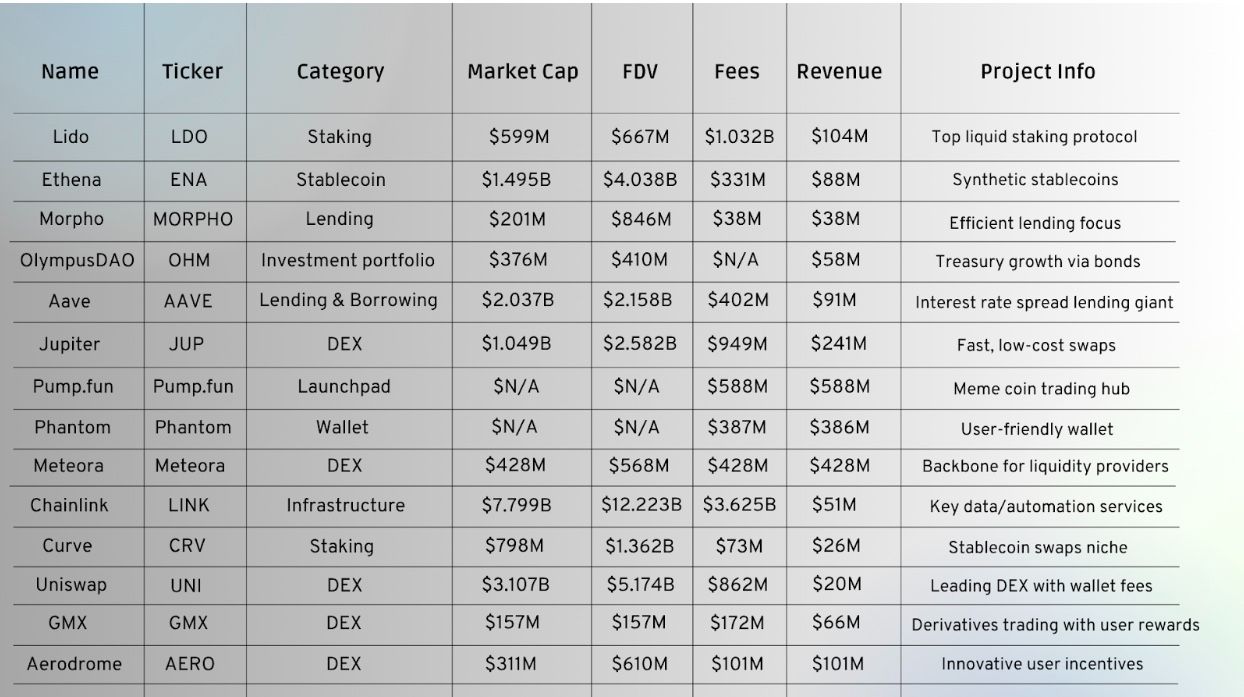and the distribution of digital products.
DM Television
Who's Really Making Money in Web3? Insights From a Business Strategist
Web3 has evolved far beyond the experimental phase. Today, it’s a high-performing, multi-billion-dollar economy with real clients, real products, and real capital at stake.
\ Every time I sit down with a client—often with 10–15 years in traditional sales or venture—they ask the same thing: \n “Who’s actually earning here, and how do we get in on it?”
\ This article is my take as a business development strategist, grounded in recent research by Solus Group and Simplicity Group. Unlike surface-level reviews, their analysis dives deep into protocols that don’t just survive Web3—they monetize it.
From Research to Strategy: Metrics That MatterI approach Web3 projects the same way I evaluate any business vertical: through hard numbers, verified sources, and operational benchmarks.
The following metrics were core to both the research and my own frameworks for building institutional Web3 strategies:
- Total Revenue — More than just a performance stat. It’s the best proxy for real market demand.
- Monetization Model — Token sales? Fees? Innovative mechanics? Your sustainability hinges on this.
- Market Capitalization — A pulse check for investor sentiment and project maturity.
- User Base — No traction, no future. Active wallets beat vanity metrics every time.
- Integration Capabilities — Can the protocol plug into broader ecosystems without friction?
- Data Transparency — Audited dashboards build trust, and unaudited hype loses credibility.
- Growth Trajectory — If revenue flatlined or spiked during one bull cycle, it’s a red flag.
\ As Nick Smohorzhevskyi, CIO at Solus Group and architect of the study, shared with me:
“We focused on Ethereum-first and single-chain projects with real businesses, not fleeting hype. Data came from CoinGecko, CoinMarketCap, DefiLlama, and Dune—cross-verified to ensure institutional reliability. Investors must evaluate scalability and long-term viability. Projects generating consistent revenue thrive across market cycles. This research helps pinpoint those winners.”
\ That’s the gold standard I look for when advising clients.
Key Trends for Strategic PositioningBased on my review of the research and ongoing market conversations, here are three trends no institutional player can ignore:
- Liquid Staking — Protocols like Lido ($104M revenue) prove that user demand for yield with flexibility is here to stay.
- Multichain Interoperability — Chainlink excels here. In a fragmented market, cross-chain support is essential for scale.
- RWA Integration — Tokenized real-world assets are breaking into mainstream portfolios.
\ As Sarah Noggler, leading Web3 advisor and top LinkedIn voice in digital assets, aptly said:
“The inflection point came when major institutions stopped piloting and began pricing RWAs on-chain as the primary source of truth. BlackRock and others feeding real performance data into tokenized funds and bonds led the market.”
\
My Strategic Takeaways for Institutional Investors- Scalability over speculation: Bet on platforms with revenue tied to usage, not just tokenomics (Lido, Chainlink).
- Ecosystem leverage: Solana-native Jupiter ($241M) and multichain Uniswap ($20M+) succeed by leaning into their chain’s strengths.
- RWA-backed models: Ethena ($88M) offers innovative structures like synthetic stables—perfect for conservative-yield-seeking institutions.
- Consistency wins: Protocols like Morpho ($38M) and Aave ($91M) prove that user retention drives long-term alpha.
- Pick infrastructure first: Exchanges with compliance and speed—like WhiteBIT and OKX—make onboarding simpler and safer for funds.
- Underserved verticals = upside: Meteora and Phantom, with $428M and $386M respectively, highlight the value in supporting Web3 rails.
- Adaptability across cycles: Protocols like GMX ($66M), sharing rev with LPs, show resilience in all market conditions.
- Demand proof, not promises: Require dashboards, audits, and user stats. Skip the hype decks.
\ Or just do what many of my clients do: bring in a specialist who can vet, structure, and translate this into action. \n

Web3 is no longer a theory. It’s a living, breathing economy, embraced by enterprises from Tesla to Nasdaq. And it’s moving fast. As a B2B strategist, I believe success here lies not in speculation—but in alignment: between infrastructure, user value, and monetization. If you're still looking at the space with legacy lenses, it's time to upgrade.
Next-generation Web3 projects will be shaped by:
Tangible integration with the real world
Cross-chain interoperability
Transparent, verifiable growth \n
Your move.
\
- Home
- About Us
- Write For Us / Submit Content
- Advertising And Affiliates
- Feeds And Syndication
- Contact Us
- Login
- Privacy
All Rights Reserved. Copyright , Central Coast Communications, Inc.